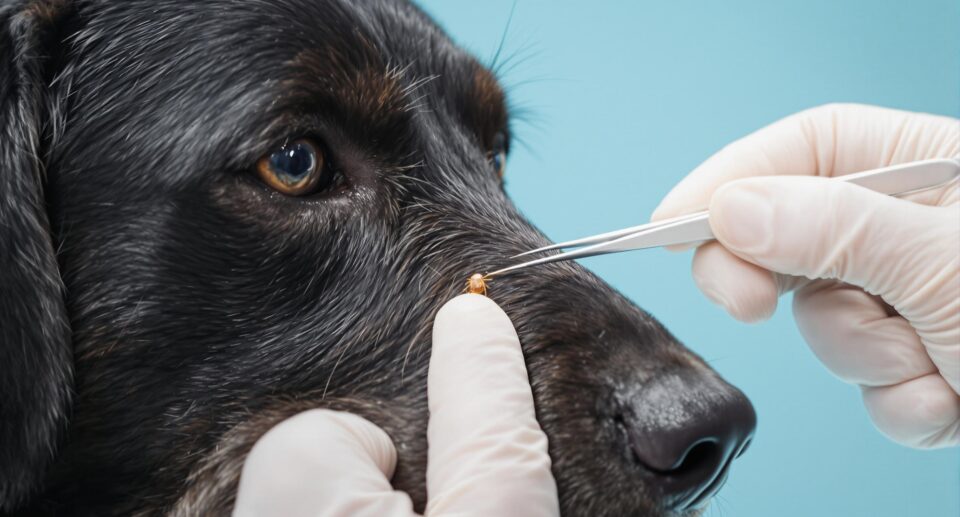When Do Ticks Come Out In The Spring?

Most of the United States has been seeing milder winters and earlier arrivals of spring weather in recent years. While you may look forward to spending time outside with your pets on warm days, don’t forget to keep your guard up against ticks. Here’s what you need to know to ensure that disease-carrying ticks don’t creep up on you and your pets this season.
Where Do Ticks Go In The Winter?
When temperatures dip below 35 degrees Fahrenheit, ticks start to settle in for the winter. They will only freeze to death if the temperature is consistently below 10 degrees Fahrenheit for at least a few days in a row. Even then, just a fraction of the population will die off. With record-breaking mild winters across the country, many regions are no longer seeing a drop in tick population by the spring.
In below-freezing conditions, ticks stay warm by hiding out in leaf litter and underbrush. Blankets of snow can actually act as insulation, helping them survive all winter long. Ticks enter a lowered activity state similar to hibernation, but it’s more like a nap than a deep sleep. They’ll awaken at any opportunity to find a host. Some ticks will actually camp out on their hosts, where they’ll stay warm throughout the winter.
Most species and life stages of ticks can survive without a blood meal for over three months. Some can last even longer between feedings. So, even a long, cold winter without a host is not always a death sentence for the hardy tick.
When Do Ticks Come Out?
Ticks do not obey calenders, nor do they watch weather reports. Any time it’s above 45 degrees Fahrenheit, even in the middle of winter, they’ll become active again. Even if it’s just for an unseasonably warm afternoon, they’ll take up the opportunity to find a meal.
On warm days, ticks crawl to the edge of branches, leaves, and debris so they can start “questing.” Questing is when a tick holds out their front pair of legs, waiting for a potential host to brush up against them.
It’s actually to a tick’s advantage when the days are warm, but not extremely hot. Ticks reproduce rapidly in temperatures of about 70 to 90 degrees Fahrenheit. They die when it’s over 90 degrees out and when the humidity is below 75 percent.
In much of the United States, ticks are most active around late March to June. During the hottest months of the year, they burrow into the grass or underbrush and go into aestivation, a low activity state to conserve their energy until the heatwave is over.
How To Keep Your Pets Safe From Ticks This Spring
Since ticks can latch onto a host, feed, and transmit disease any day of the year in any region of the United States, it makes sense to keep your pet on a year-round flea and tick preventative. Any time you and your pets spend time in a wooded area, in high grass, or an area with leaf litter, check for ticks before returning home. Even though you may dress yourself and your pets in full-coverage clothes for hikes on chilly days, ticks can still manage to latch on and hitch a ride into your home.
As the warmer weather brings you and your pets outside for walks and hikes, remember that ticks are enjoying the weather too. On those mild days, female ticks are at their most active as they seek out their final blood meal and lay thousands of eggs to complete their lifecycle. Don’t forget to use flea and tick preventatives, protect yourself with bug spray, and keep a tick removal kit close on your adventures.





